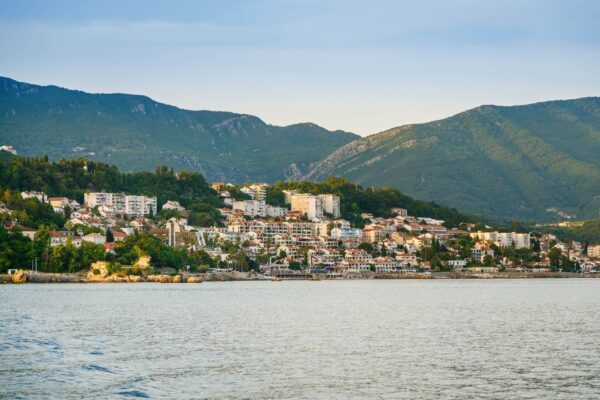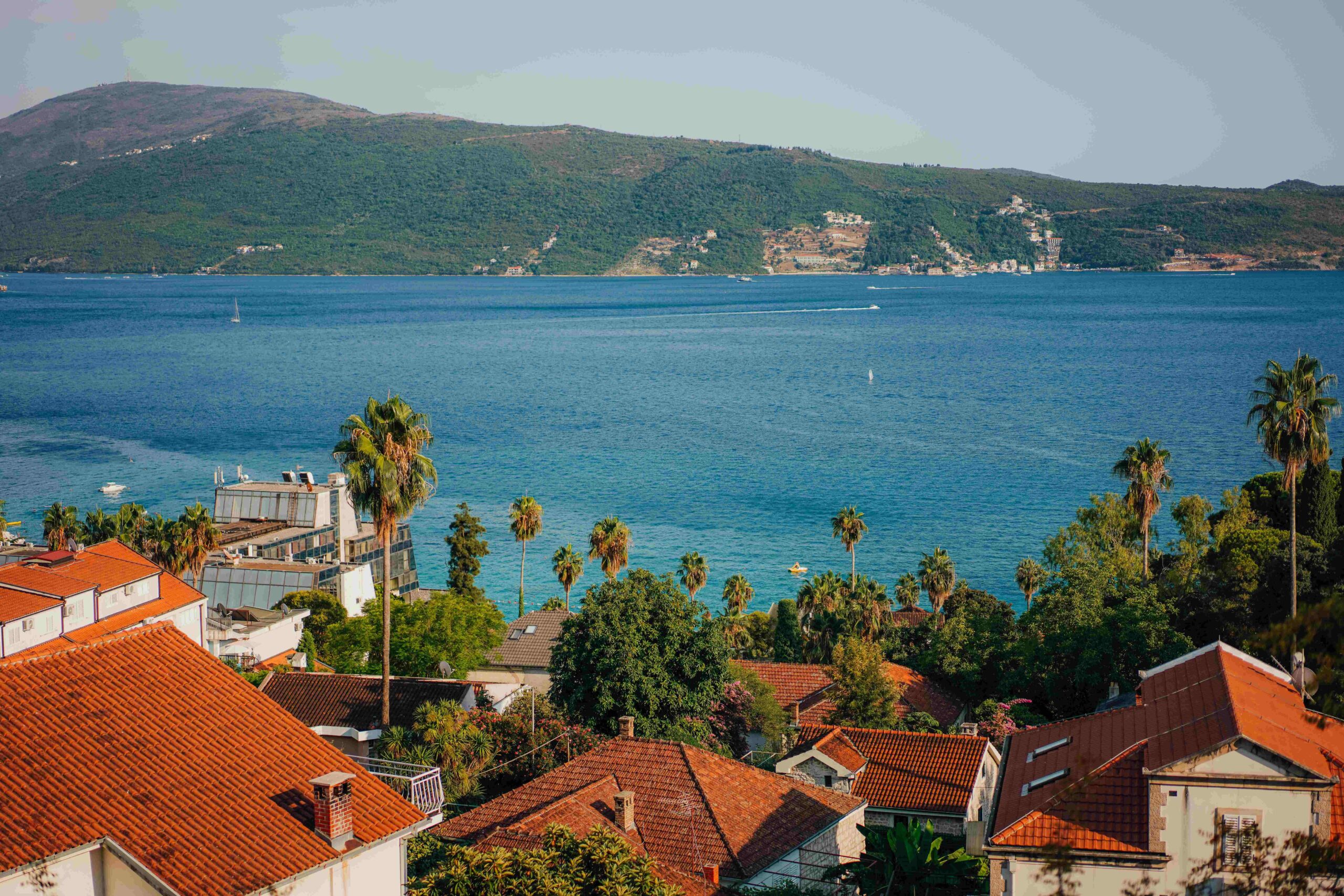
Where the Bay of Kotor opens to the Adriatic, Herceg Novi spreads like a hillside garden—stone by stone, terrace by terrace. Trees grow freely here, even in the narrowest cracks. And the light, somehow, always finds its way through.
It’s the kind of place that doesn’t rush to impress. At first, just a quiet hillside town. But then you notice the oranges hanging over walls, the stairs winding endlessly downward, and the silence between waves. Bougainvillea brushes stone windows. Somewhere, a cat disappears into shade.
There’s a lot of green in Herceg Novi—more than many expect. Pine, palm, oleander. But it’s not just the plants. The town opens into trails that drift toward olive groves and pass old stone cisterns. Along the Luštica Peninsula, the paths become quieter. Fewer people. More birdsong. A patch of thyme underfoot. A sudden view of the sea.
The Savina Monastery sits above it all. Cypress trees stand watch like old sentinels. Beyond the walls, the bay spreads open—blue, wide, still. It’s not a grand stop, but it feels like one. And the walk there is part of the reason people come.
Down by the harbor, the rhythm shifts. Nets are untangled, coffee is poured slowly, and voices carry easily across the marina. Here, the sea isn’t just scenery—it’s a way of life. A small plate of grilled fish might be the freshest thing you’ll eat all week.
What sets Herceg Novi apart from other Balkan coastal towns isn’t scale or spectacle. It’s the balance. Locals still repair boats by hand. Summer festivals light up the plazas without overwhelming them. A music performance under the stars might end without applause, just the sound of waves rolling in behind it.
Herceg Novi isn’t hard to reach. It’s about 30 kilometers from Tivat airport,

and the drive itself introduces the coast gently. Lodging leans toward the simple: guesthouses with lemon trees, hotels with tiled patios. If you want glass walls and rooftop pools, you’ll find them—but the charm lives elsewhere.
Late spring is kind to the senses. So is early fall. Fewer visitors, less heat, more color. The plants seem to stretch out in these seasons, and the town moves at a slower, softer pace.
If this is a travel guide, then it’s a quiet one. Herceg Novi doesn’t sell itself loudly, and maybe that’s the point. The town unfolds slowly. The longer you stay, the more you notice. Small patterns. Shifting light. The curve of a staircase you didn’t see the first day.
This isn’t the kind of place that insists on your attention. But it welcomes it—gently, like a doorway left open.
Comments are closed